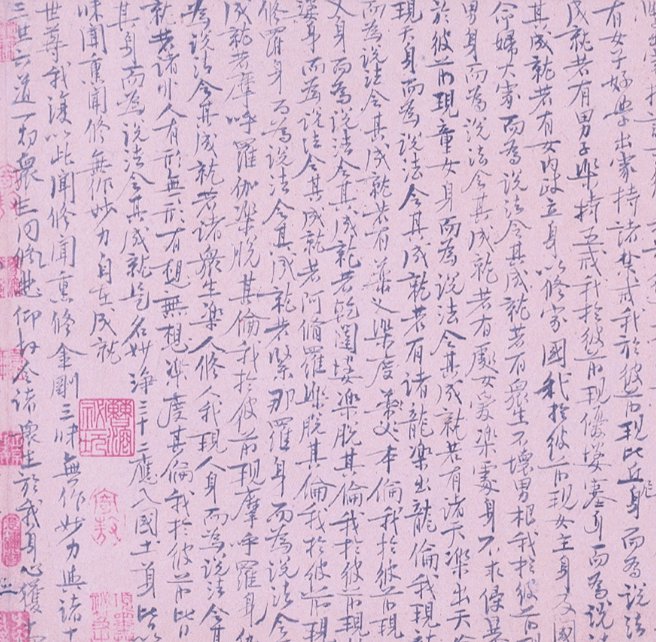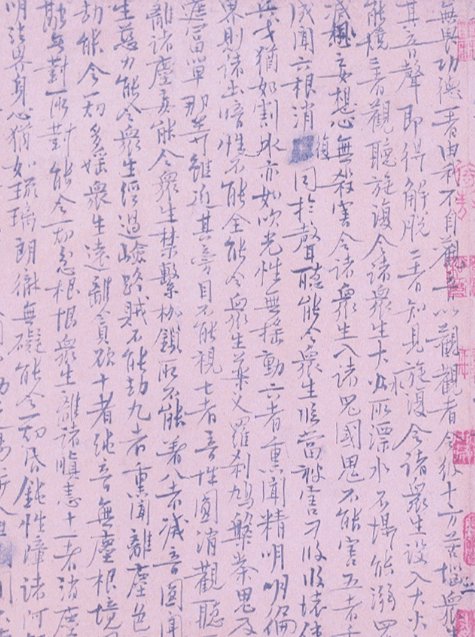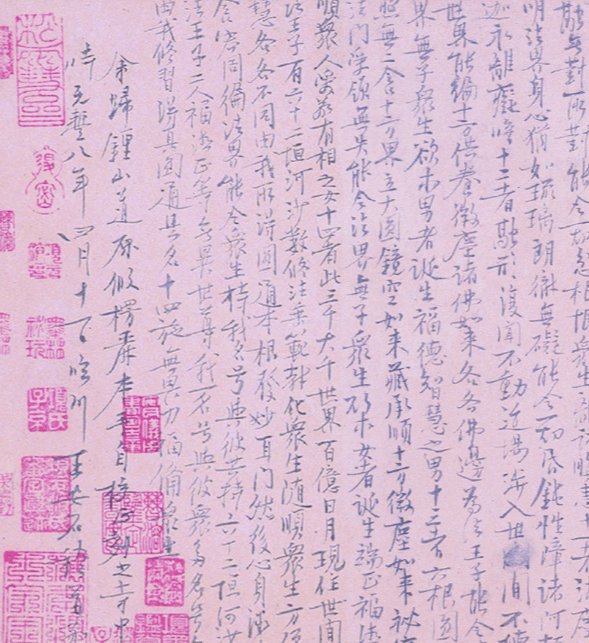Among the treasures of the Shanghai Museum is a calligraphy work written by Wang Anshi, the Prime Minister of the Northern Song Dynasty. More than a thousand years later, the flying and dancing strokes of the calligraphy are still amazing.
Wang Anshi, courtesy name Jiefu, Banshan, also known as Banshan Old Man, was a native of Linchuan, Fuzhou (now part of Jiangxi). He has been famous throughout the ages for his presiding over the reform and literary achievements. What is less known is that he is also good at calligraphy. Su Dongpo once said that calligraphy is "impossible, but it cannot be learned." Mi Fu said that he studied Yang Ning's style, and Huang Shangu said that "among the recent scholar-bureaucrats, Duke Jing has the temperament of the ancients, but is not upright, but his writing is very expressive."

Wang Anshi's "Essentials of the Surangama Sutra in Running Script" Volume Paper 29.9×119cm Collection of Shanghai Museum
This national treasure is called "Shurangama Sutra Essential Volume", which was written by Wang Anshi the year before his death. Wang Anshi had two ups and downs. In his later years, he lived in Zhongshan, Jinling, and led his disciples to write books and establish theories. In his later years, he became disheartened and became obsessed with Buddhism. He copied this scripture just to gain peace of mind. He hid this work in Baoning Temple and did not publicize it widely.

Wang Anshi's running script "The Essentials of the Surangama Sutra"
Every word in "Leng Yan Jing Zhi Yao" is just like a fingertip. The font is close to regular script with a slight hint of running script. The ink color is light and elegant, and the stipples are fresh and vigorous. The layout of the whole text has the trend of "crossing wind and rain". Although the lines are very close and there are few blank spaces, there is no cluttered feeling. . If you carefully taste the author's writing, it seems to be careless, but the leisurely and harmonious charm is revealed in the edges. From this, we can see that after Wang Anshi resigned as prime minister, his life was in a comfortable and comfortable state, and he achieved leisure. The reputation of a generation of famous calligraphers.

Huang Tingjian imitated Wang Anshi's calligraphy to the point of being unreal; he claimed that he got it from Wang Anshi; Wang Anshi got the true meaning of Yan Zhenqing, but he got it accidentally. His talent is so great. From Li Zhiyi's comments, we can understand Huang Tingjian's admiration for Wang Anshi's calligraphy.
Cai Shangxiang's quotation of Zhang Jingfu's views seems to be a footnote to Huang Tingjian's views: "If you don't pay attention to Prime Minister Wang's calligraphy at the beginning, if you look closely, you can see that people in the Jin and Song Dynasties used brushes well." Most of the things he did were based on his own ideas, and he only focused on calligraphy and painting to do whatever he wanted. In his later years, he was particularly sophisticated in his calligraphy." "Jing Gong worked with his own initiative and did not ask for work. However, the simple slips are like a master and a superior scholar. They are walking among high chariots and horses with shabby clothes and tattered shoes, but their eyes are already on the backs of oxen."
He seems to be straightforward, but in fact he is superior to others. Because he acts decisively, his calligraphy also reveals a unique personality, which cannot be imitated.
Wang Anshi presided over the reform, which not only offended too many people in his day, but also became a tool for factional struggles in later generations whenever there was a dispute between reform and conservatism. For example, during Zhang Juzheng's reform, many literati suddenly criticized Wang Anshi and used the past to satirize the present. . The ancients have always believed that words are like people, and they use their handwriting to judge people as impatient and slanderous, which makes people sigh with regret.
After the crazy suppression by the conservative die-hards in the past dynasties, very few of Wang Anshi's masterpieces have been left. At present, there are only two recognized works, one of which is the "Essential Volume of the Surangama Sutra". Judging from this work, it is indeed as urgent and straightforward as a chapter, and it can be seen that Wang Anshi's writing speed is extremely fast. However, from an aesthetic point of view, it breaks through the conservative ideological concepts and has a unique personality of winning with "meaning". He is unique in calligraphy with his elegant style, which is undoubtedly a new trend in the steady calligraphy of the Song Dynasty.
Su Dongpo, the leader of the "Four Schools of Song Dynasty", once praised Wang Anshi's calligraphy:
Duke Jing worked on his own initiative and did not ask for work. Instead, he looked like a tall man and a victorious scholar, with shabby clothes and tattered shoes, walking between high carriages and four horses, while his eyes were already on the backs of oxen.
This is enough to prove the exquisiteness of Wang Anshi's calligraphy art, and it is also enough to prove that "The Essential Volume of the Surangama Sutra" is a well-deserved national treasure.
The article comes from the WeChat public account Qinqi, Calligraphy and Painting APP, and the copyright belongs to the original author!








